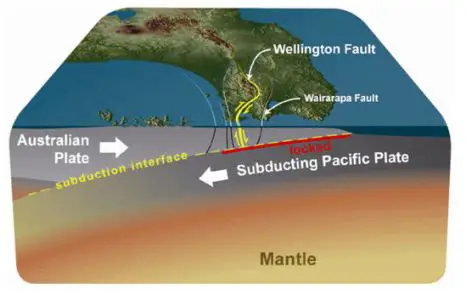
There are many questions and unexplained theories about earth’s composition and evolutionary history. One such question is “Why the earth’s tectonic plate’s move and what causes the movement?”
Before explaining what causes the tectonic plates move, let’s get some idea about what are tectonic plates. Tectonic plates are basically composed of crust and upper mantle rocks, which are lighter than the dense mantle down in the earth. There are unstable currents, rising and falling, in the mantel which causes slow movements of the tectonic plates.
The source of the convection currents cause the slow movement from residual heat of the Earth formation processes, high pressure from gravity and radioactive decay of elements. Apart from the processes there is a new force called the slab-pull force which occur when a dense plate subducts with a less dense plate and pulls the rest of the plates along with it. The process of subducting a plate drives the downward motion of convection currents.
Apart from the convection currents, one other reason of the movement of tectonic plates is that they float on the top of the liquid mantel. The mantel itself moves by convection currents. The movement inside the earth crust also jostles the plates of crust on top.
Earthquakes are the common cause of the movement of tectonic plates caused by the underlying convection currents. The movement of tectonic plates mainly occurs over a period of hundreds of thousands to millions of years and is quite random. The bits get struck against each other and it causes sudden jolt up to ten feet. It may be small but the shock is enough to knock out a building.
The convection currents change over time and it’s quite chaotic as the tectonic movement causes continents come together then move apart and then together again.